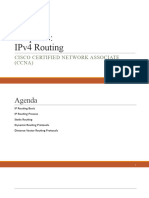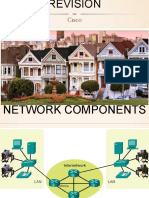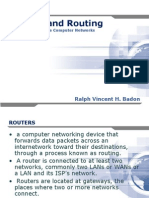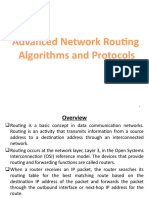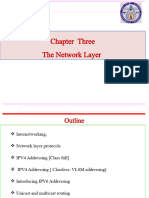0% found this document useful (0 votes)
10 views47 pagesModule 5
Module 5 covers the configuration of routing and advanced switching, detailing concepts such as static and dynamic routing, routing tables, and the importance of routing protocols like OSPF and BGP. It also introduces Network Address Translation (NAT), firewall types, and the functionality of Virtual LANs (VLANs) in network segmentation. The module emphasizes the need for proper configuration and troubleshooting techniques to ensure efficient network communication.
Uploaded by
itstd.6375Copyright
© © All Rights Reserved
We take content rights seriously. If you suspect this is your content, claim it here.
Available Formats
Download as PDF, TXT or read online on Scribd
0% found this document useful (0 votes)
10 views47 pagesModule 5
Module 5 covers the configuration of routing and advanced switching, detailing concepts such as static and dynamic routing, routing tables, and the importance of routing protocols like OSPF and BGP. It also introduces Network Address Translation (NAT), firewall types, and the functionality of Virtual LANs (VLANs) in network segmentation. The module emphasizes the need for proper configuration and troubleshooting techniques to ensure efficient network communication.
Uploaded by
itstd.6375Copyright
© © All Rights Reserved
We take content rights seriously. If you suspect this is your content, claim it here.
Available Formats
Download as PDF, TXT or read online on Scribd
/ 47













